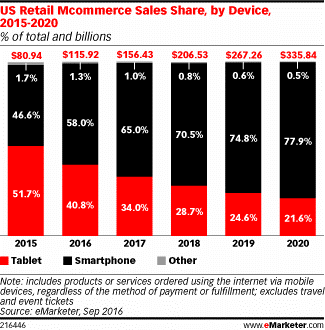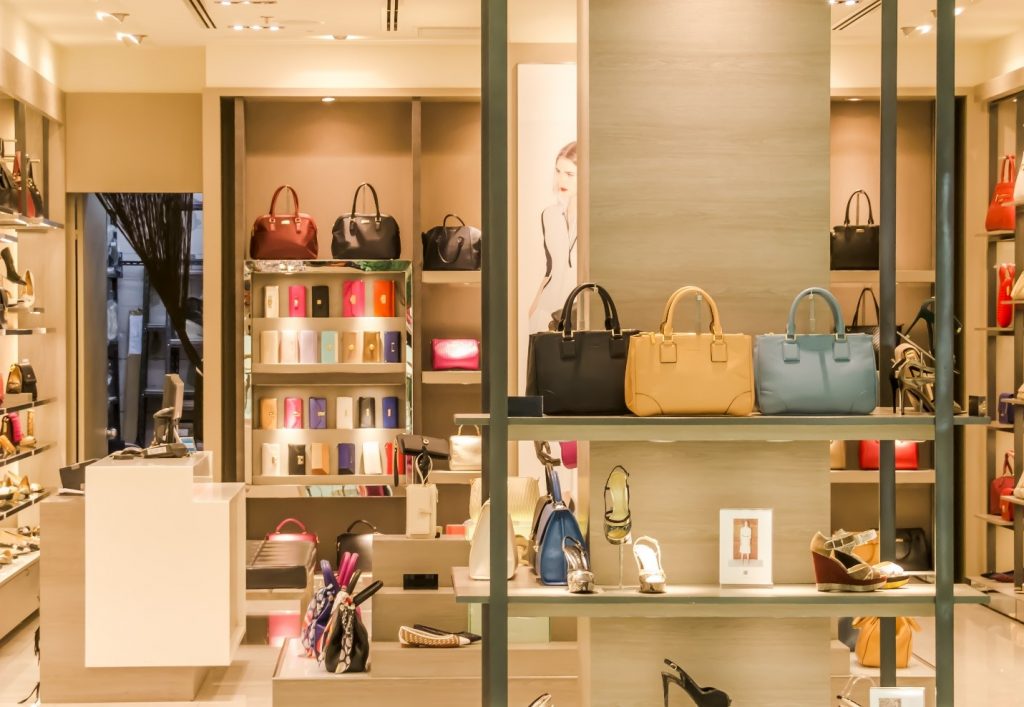Mobile a major factor in global
e-commerce sales this holiday season.
Did you know that worldwide retail e-commerce sales will climax at $1.9 trillion by the end of this year?
According to eMarketer, this year’s US holiday retail e-commerce is forecasted to grow 17% hitting $95 billion, and will represent nearly 11% of total holiday retail sales – the largest share of the pie, ever.

So, what are the biggest marketing trends we’re seeing as the holiday e-commerce season ramps up?
1. Sales growth driven by smartphones
Double-digit growth is expected all the way through 2020 when sales will hit $4 trillion. E-commerce is huge, especially during the holiday season and mobile is a driving factor of this growth.

Retailers are in fact embracing mobile and seeking to improve the user’s purchasing experience on mobile.
Improved user experiences, bigger screens, and easy, efficient, and convenient payment methods are likely the main reasons why sales are improving on smartphones.
But more improvement is required to motivate more mobile conversions.
Earlier this year, GfK on behalf of Facebook IQ ran a study of 2400 adults who used mobile phones, tablets, desktops or laptops to research or buy items from online stores over three months. Consumers bought across a range of categories including consumer electronics, clothing, home appliances, home goods, and beauty (AdWeek).
 Although 55% of participants chose to purchase on mobile because of the convenience factor, the study revealed there are significant challenges that still exist for mobile sales.
Although 55% of participants chose to purchase on mobile because of the convenience factor, the study revealed there are significant challenges that still exist for mobile sales.
70% of participating shoppers stated that mobile website and app experiences can still be improved, and that includes a more streamlined final payment process.
Privacy problems, the inconvenience of multi-screen sequential browsing issues, accidental clicks on small screens, and clunky check out processes were all concerns expressed even by mobile friendly consumers.
2. Local mobile search will rise
Multiple consumer touch points are important in the process towards a completed conversion. One of the biggest pros of having a brick and mortar store to service consumers is enabling clients to actually touch and feel a product – a critical, real world touch point.
Interestingly enough, prospective clients are doing so with products in store and on their screens, simultaneously. Mobile in-store searches are up by over 30% according to Google.
Shoppers are increasingly buying on their screens within stores, despite the checkout being so near.

Take me as an example, I’ve been to Ikea a lot this past month (like 5 times and we’re only halfway through the month). Each and every time, I’ve hopped on Ikea’s free WIFI on my iPhone and run some searches before adding items to my online cart.
In fact, Google tells us that 43% of mobile shoppers in consumer electronics have purchased products on their phones while looking at said products in the aisle.
With so much information available at their fingertips for digitally savvy shoppers always looking for deals, you can bet this trend will keep on growing well into 2017. For marketers, this means capitalizing on programmatic geolocation targeting capabilities.
3. Retailers are focusing on unique in-store experiences, supported by strong social media presence
The holidays is one of those times of years when delighting consumers isn’t just part of the spectacle, it’s a necessity.
Over the top window displays, mini-concerts, and special promotions are all part of pushing consumer desire to buy. A couple weeks ago the Hudson’s Bay in downtown Toronto had Mariah Carey perform as they unveiled their always well received holiday windows. The event generated a tonne of hype and free social media buzz produced by the audience in attendance.

Creating memorable experiences is a major retailer responsibility to curate demand, considering consumers know that there is always a deal happening somewhere.
Millennials in particular, drivers of the global economy, generally believe the experience is just as important as the product.
Retailers need to turn to technology to improve the already hectic holiday shopping experience if they hope to boost sales. Self-service technology like in-store kiosks to help with navigation or stock checks (e-catalogs), or express checkout services are all ways that retailers can engage consumers in store and win this holiday season.
Want to learn more? Connect with our team at sales@clearpier.com